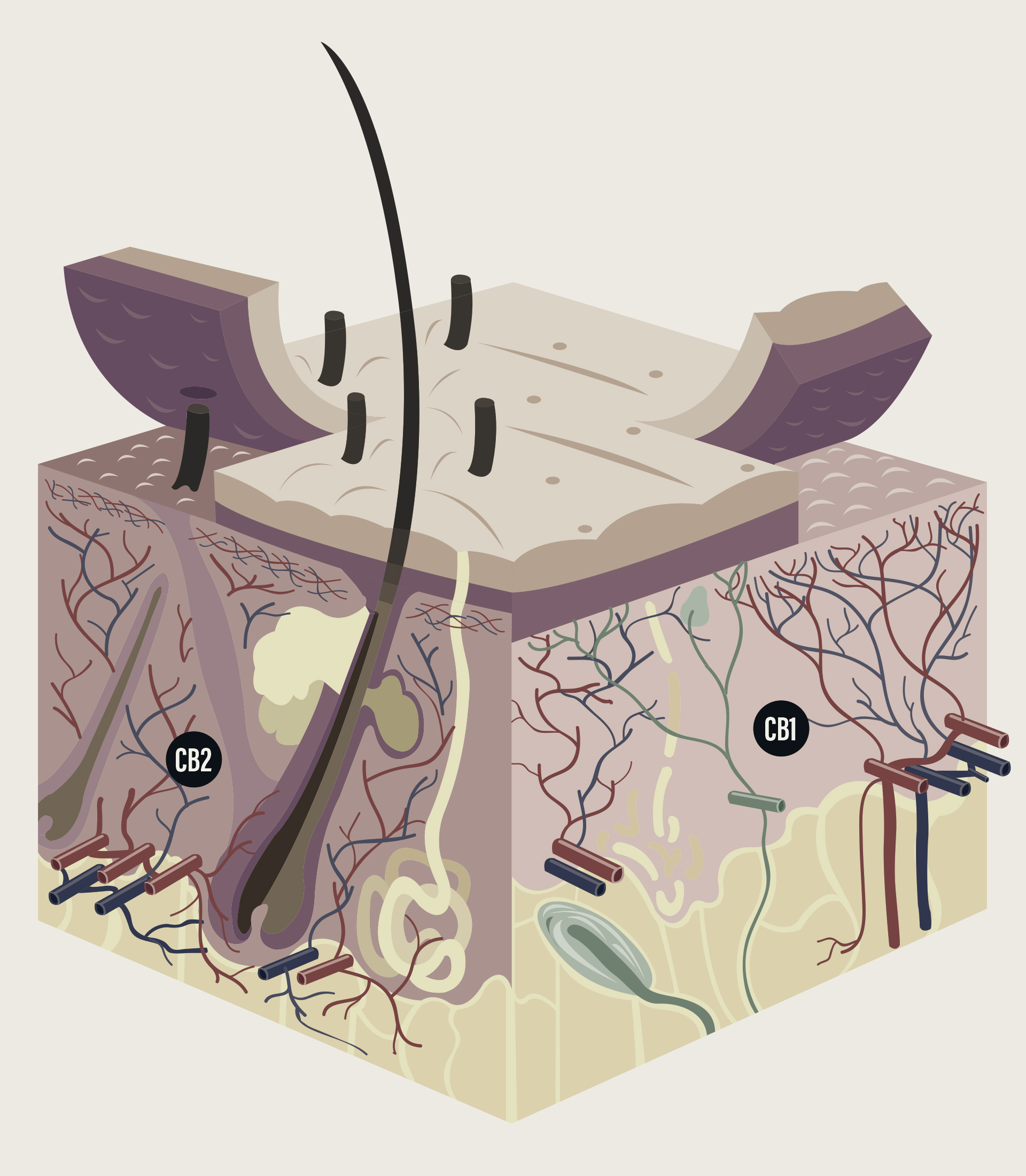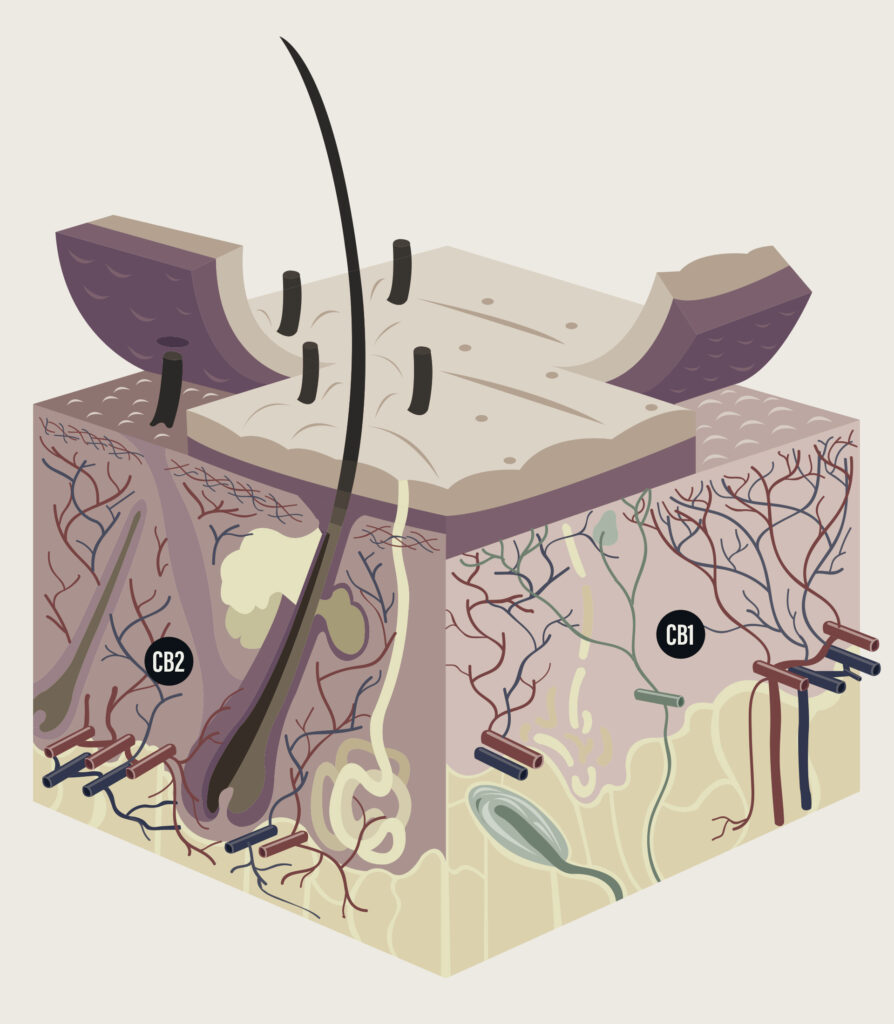Skinsational
The skin is the largest bodily organ and an effective barrier against viruses, pollutants, radiation, etc. It helps regulate body temperature via sweat, excrete toxins, synthesize vitamin D3, absorb nutrients, and connects us to the world through sensory feedback. Unlike other organs, skin has a lot of independence, relying largely on itself to produce regulating hormones, immune cells for repair, and the endocannabinoids that help balance other functions. Needless to say, it pays off to take good care of this vital part of the body!
Complex Simplicity
Even though the skin is relatively thin, it is made of 3 complex layers that contain cells with specialized functions. The first layer is called the epidermis and is primarily made of keratinocytes (you might have heard of keratin) that are arranged in a tightly woven pattern that keeps skin waterproof and protects the body from outside threats. Due to the protective qualities of the epidermis, effective cannabis topicals include ingredients that help increase the permeability of this outer armour to allow cannabinoids to properly interact with the body in the next level down. Feel like you are in grade 8 science class yet?
Below the epidermis is an intricate layer called the dermis. This is where the real magic of topicals happens. The dermal layer contains a multitude of organelles or “mini-organs” like nerve cells, capillaries, lymph vessels, hair follicles, sebaceous glands, sweat glands, immune cells, sensory nerves and more. Each of these mini-organs play a unique role in maintaining skin function and balance. Each of these structures contain their own cannabinoid interaction points, called CB1 and CB2 receptors. One may wonder why the skin has its own cannabinoid receptors already built in and ready to receive the helpful effects of external THC and CBD. This is because the body produces its own set of cannabinoid-type chemicals called endocannabinoids, which help moderate the function of the various mini-organs in the dermis. Endocannabinoid receptors are not a perfect molecular match for external cannabinoids, but they are close enough to allow interaction.
What makes cannabis topical products interesting is that external inputs to the body’s internal receptors may mimic and influence their natural actions. The last of the three skin layers is called the hypodermis (also known as the subcutaneous layer), which contains larger blood vessels and fatty tissues. While generally not relevant to the effects of cannabis topicals, the hypodermis serves it’s own important functions as both a buffer and connective substrate between the sensitive organelles of the dermis and the rest of the body.
You’re now skin savvy!
There you have it! Your crash course in cannabis topicals and the skin! If you have questions for us we would love to chat!

